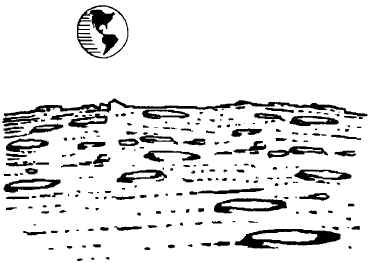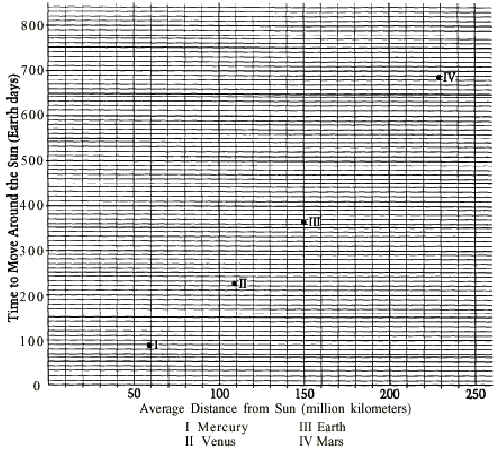Sample CAPT Questions - Astronomy
![]()
As a result of learning about the solar system and the universe:
Students understand the structure, motion and composition of stars, planets and other bodies, with an emphasis on our solar system.
Describe the orientation, direction and duration of the movement of the Earth around its axis and around the sun and relate these to day/night cycles and the seasons. (EIA1) 1. How long would a complete day (day and night) on Earth be if it did NOT spin on its axis?
a. 24 hours
b. 1 month
c. 3 months
d. 1 year
| Explain how the changes in the relative positions of the sun, moon and Earth affect the phases of the moon and eclipses, and describe tidal variations. (EIA2) |
| Noon | 12:30 p.m. | 1:00 p.m. | 1:30 p.m. |
 |
 |
 |
 |
2. Four stages in the progression of a solar eclipse are shown above. How would the eclipse most likely look at 2:00 p.m.?
a
|
|
b.
|
|
c.
|
|
d.
|
|
Tides

3. The time at which high and low tides occur changes by about 50 minutes each day. Which of the following best explains this occurrence?
a. The ocean currents delay the tides.
b. The prevailing winds act in opposition to the tides in most areas.
c. The moon is not in the same position relative to the Earth each day.
d. The pull of the sun slows down the cycle.4. Why does the moon have a greater effect on the tides than the sun?
f. The moon is larger than the sun.
g. The moon is solid while the sun is gaseous.
h. The moon rotates more quickly than the sun.
j. The moon is closer than the sun to the Earth.
| Describe our solar system including the estimated size, composition and surface features of the sun, planets, and lesser members. (EIA3) |

5. The Earth and the moon have both been struck by many meteors which have created craters on their surfaces. Explain fully why most of the moon’s craters are still visible while most of the Earth’s craters are not.
___________________________________________________________________
___________________________________________________________________
___________________________________________________________________
___________________________________________________________________
The planets move at different speeds and require different amounts of time To circle the sun. The following graph shows the number of Earth days it takes for each of the four planets to move around the sun once.

6. Based on the graph, which of the following is true?
a. The farther a planet is from the sun, the longer it takes for the planet to move around the sun.
b. The closer a planet is to the sun, the longer it takes for the planet to move around the sun.
c. The smaller a planet is, the longer it takes for the planet to move around the sun.
d. The larger a planet is, the longer it takes for the planet to move around the sun.
Explain how astronomers collect and interpret information to determine the motion, structure and composition of stars. (EIA4) 7. Star A and star B are observed in the night sky. Star B appears brighter than star A. The reason that a star appears brighter from Earth does not depend on its
a. distance from Earth.
b. surface temperature.
c. size.
d. altitude and azimuth.8. The color of a star provides a measure of its
a. size
b. mass
c. composition
d. surface temperature9. Stars in the universe
a. are solid like planets.
b. generate some form of energy.
c. are approximately the same temperature.
d. were all formed at approximately the same time.